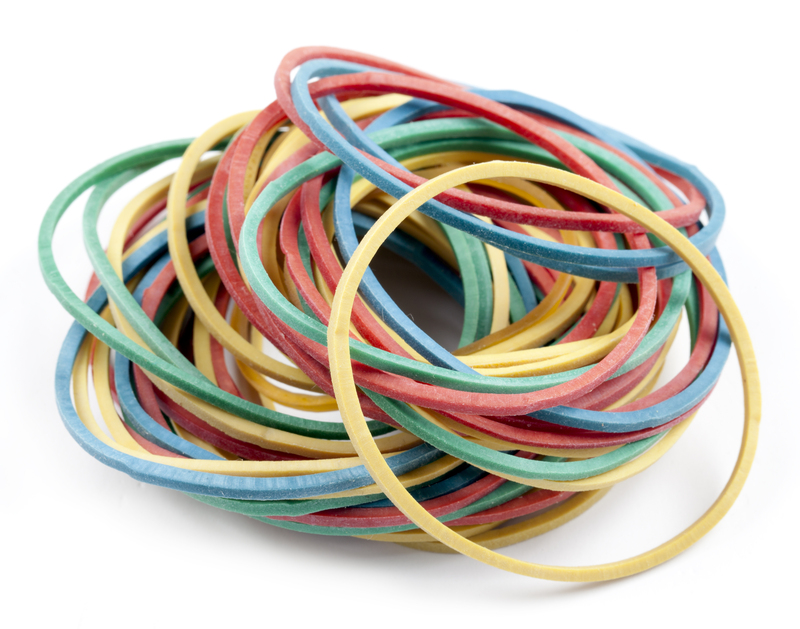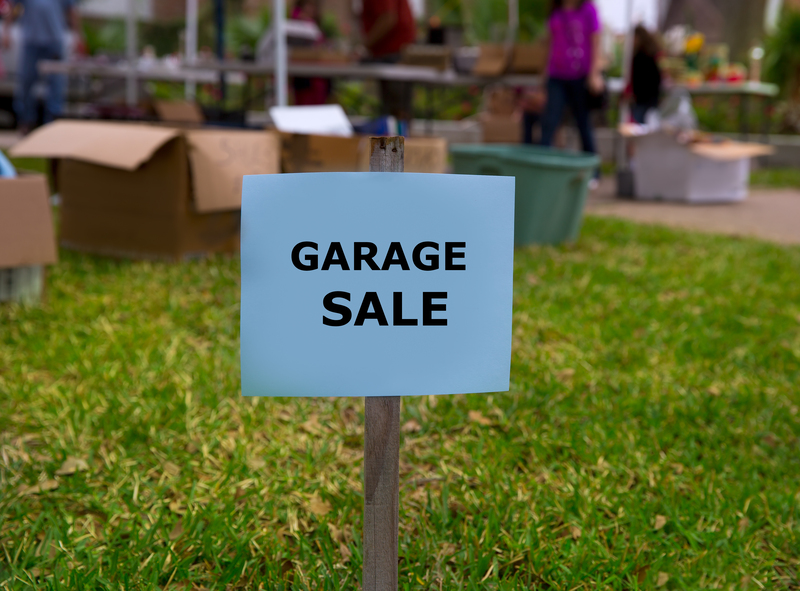Protect the Planet--How to Dispose of PPE Waste the Right Way
PPE waste has become an urgent environmental challenge since the onset of the COVID-19 pandemic. Items like disposable masks, gloves, gowns, and face shields--collectively known as Personal Protective Equipment (PPE)--have played a vital role in safeguarding public health. However, the proper disposal of PPE waste is critical to avoid lasting damage to our planet. In this comprehensive guide, you'll learn how to dispose of PPE waste correctly, why it matters, and the steps individuals, businesses, and communities can take to create a more sustainable future.
Understanding the Impact of PPE Waste on the Environment
Discarded PPE is polluting our oceans, rivers, and landscapes. These items are typically made from plastics such as polypropylene and other synthetic fibers, which are non-biodegradable and can persist in the environment for hundreds of years. As a result, environmental PPE disposal is crucial for wildlife, public health, and the aesthetics of our communities.
The Surge in PPE Usage
Between 2020 and 2022, scientists estimate that global PPE production doubled, resulting in millions of tons of waste. Hospitals, offices, and households dramatically increased their use of single-use masks and gloves. Unfortunately, much of this PPE was disposed of improperly, ending up in public spaces and natural habitats.
Why Improper Disposal Is a Problem
- Waterway Pollution: Many discarded masks and gloves eventually reach rivers and oceans, posing risks to marine life that may ingest or become entangled in waste.
- Microplastic Generation: PPE made from plastics breaks down into harmful microplastics, further contaminating soil and water sources.
- Health Hazards: Littered PPE can carry pathogens and pose health risks to sanitation workers, wildlife, and the public.
- Clogged Sewage Systems: Improperly discarded masks and gloves can block sewage and stormwater systems, leading to flooding and infrastructure damage.

Best Practices: How to Dispose of PPE Waste Responsibly
With the right strategies, anyone can minimize the environmental impact of PPE disposal. Following are recommended methods to safely dispose of PPE waste:
For Individuals
-
Do Not Recycle Used PPE:
Most municipal recycling programs do not accept PPE like disposable masks and gloves. Placing them in recycling bins can contaminate the recycling stream and endanger workers. -
Bag It Before Binning:
*Place used PPE in a dedicated rubbish bag and tie it securely. This prevents the potential spread of pathogens.* -
Dispose of in General Waste:
Used PPE should go with general waste destined for landfills or incineration, not with recycling. This is the most effective way to prevent contamination and litter. -
Cut the Ear Loops:
Before discarding disposable masks, cut the ear loops to prevent wildlife from getting entangled if the mask ends up in the environment. -
Consider Reusable PPE Where Safe:
Opt for washable, reusable masks and gloves where appropriate. This significantly reduces waste output and the environmental burden.
For Businesses and Healthcare Facilities
-
Provide Clearly Labeled PPE Disposal Bins:
Placing special, labeled bins for PPE waste encourages correct disposal and simplifies collection and handling. -
Follow Regulated Medical Waste Protocols:
In healthcare settings, used PPE may be considered medical waste and must be managed according to local, state, or federal regulations to ensure safe disposal and protect sanitation workers. -
Implement Strict Waste Segregation Policies:
Ensure that PPE waste is separated from general waste and recyclables. Segregated waste is easier to process, treat, and dispose of responsibly. -
Educate Employees and Visitors:
Regular reminders and informational signage help keep everyone informed on the right way to dispose of PPE waste safely.
Innovative Solutions for Sustainable PPE Disposal
Advances in technology and sustainable practices are making it easier to manage PPE waste responsibly. Let's explore some promising approaches and solutions that are gaining traction worldwide.
Recycling and Upcycling Programs
- Specialized PPE Recycling: In some regions, companies and municipalities have launched programs to collect and recycle disposable masks, gloves, and gowns. These systems often melt down plastics to create new products such as road materials, park benches, or even new PPE.
- Textile Upcycling: Certain organizations collect clean, unused PPE and upcycle it into non-medical products, reducing landfill waste.
Energy Recovery from PPE Waste
- Incineration with Energy Recovery: High-temperature incinerators can safely burn PPE waste, using the heat generated to produce electricity or heating for local facilities. This method reduces the volume of waste while generating usable energy.
Development of Biodegradable PPE
- Next-Generation PPE: Scientists are working on masks, gloves, and gowns made from biodegradable materials such as bamboo fibers or plant starch. These break down more quickly and pose fewer environmental risks if littered.
Community Clean-Up Initiatives
- Volunteer Litter Patrols: Many environmental groups organize regular clean-ups in cities, parks, and beaches to collect and dispose of PPE litter. Participating in or supporting these efforts helps reduce the environmental footprint of PPE waste.
Environmental Impact: The Cost of Inaction
Improper disposal of PPE has measurable consequences for ecosystems and human health:
- Wildlife Endangerment: Animals ingesting plastic masks or becoming entangled in gloves can suffer injuries, impaired movement, or even death.
- Microplastics pollution: Over time, discarded PPE breaks down into tiny plastic particles that contaminate soil, water, and food chains.
- Sewage and Drainage Issues: PPE litter can clog drainage systems, leading to flooding and public health hazards.
- Public Spaces Degradation: Littered masks and gloves make parks, streets, and beaches unsightly, reducing the overall quality of life.
Legislation and Global Guidelines on PPE Disposal
Many governments and international bodies have issued guidelines for PPE waste disposal to limit the environmental impact:
- World Health Organization (WHO): Recommends that used PPE be disposed of as non-recyclable waste, preferably incinerated in facilities equipped for hazardous waste.
- U.S. Environmental Protection Agency (EPA): Advises individuals to place used masks and gloves in household trash. Medical settings must follow OSHA regulations for hazardous and infectious waste.
- European Union: Encourages member states to set up dedicated PPE disposal points in public areas and to provide public education on safe disposal methods.
Why Legislation Matters
*Clear rules and enforcement mechanisms help ensure PPE waste is managed in a way that protects human health and the environment.*
How You Can Help: Everyday Actions for Proper PPE Waste Disposal
Everyone has a role in protecting our planet from improper PPE waste. Here are easy steps to make a meaningful difference:
- Choose reusable PPE where possible. Washable masks and gloves reduce single-use waste.
- Always dispose of used PPE in a lined waste bin with a tightly closed lid.
- Do not litter or flush PPE down toilets or drains.
- Participate in local clean-ups and recycling programs.
- Spread awareness to friends and family about the importance of proper PPE disposal.
For Businesses and Schools:
- Install dedicated PPE disposal bins in high-traffic areas.
- Offer reusable PPE alternatives to staff and students where feasible.
- Share information and training on correct disposal processes.
Frequently Asked Questions (FAQs) About PPE Waste Disposal
Can I recycle face masks and gloves?
No. Most household recycling bins are not designed for PPE. These materials can contaminate recycling and pose safety risks. Only specialized recycling programs can process these items.
Are there eco-friendly alternatives to disposable PPE?
Yes. Cloth masks, washable gowns, and reusable face shields are widely available and effective for most non-medical settings, reducing waste output drastically.
How does littering PPE harm the environment?
Discarded masks and gloves can endanger wildlife, block waterways, and eventually break down into microplastics, harming animals and contaminating food sources.
Is it safe to throw PPE in general waste?
Yes. The safest way for most people to dispose of used PPE is in general trash. Be sure to tie the bag closed before disposal to prevent exposure to sanitation workers.
What should I do with large amounts of used PPE from my business or organization?
Contact your local waste management authority for guidance on handling bulk PPE waste. Special arrangements may be necessary for medical or hazardous materials.

Conclusion: Act Now to Protect Our Planet from PPE Pollution
Our shared responsibility is to dispose of PPE waste the right way to protect public health and the environment. Simple actions, such as using bins properly, choosing reusable PPE where possible, and supporting community recycling or clean-up initiatives, can have a profound effect. Government regulations, societal awareness, and individual efforts must work together to counteract the lasting impact of PPE pollution.
The next time you use a disposable mask or glove, remember: Proper PPE waste disposal isn't just a personal responsibility--it's a crucial step in the global effort to safeguard our planet's future.
Further Resources and References
- World Health Organization - Guidelines on PPE Disposal
- U.S. EPA - PPE Waste Management
- Nature - The Environmental Toll of Disposable PPE
- EcoWatch - PPE Pollution Concerns
Protect the planet--start disposing of PPE waste the right way today!
